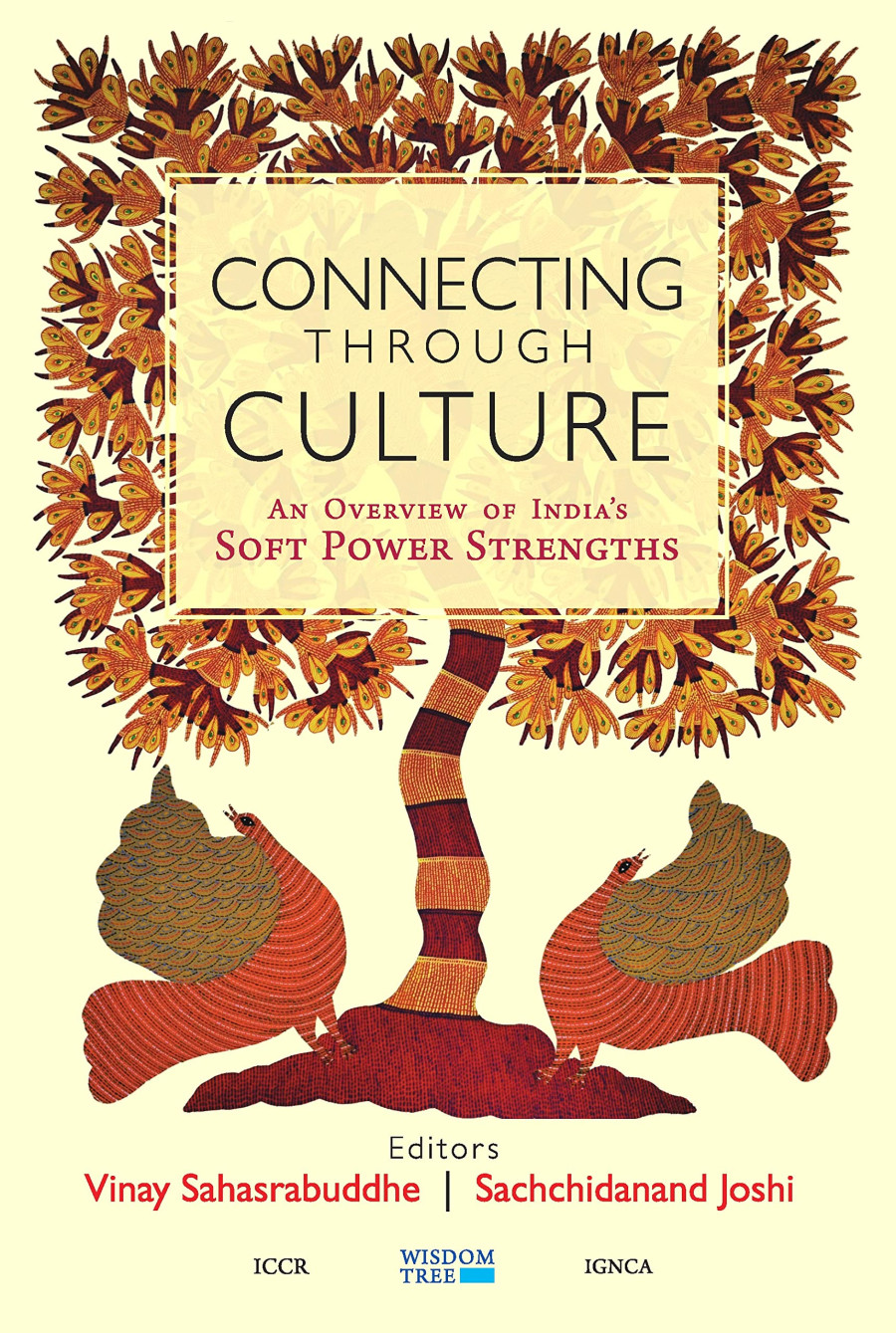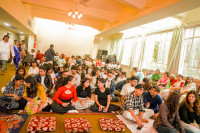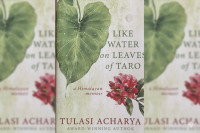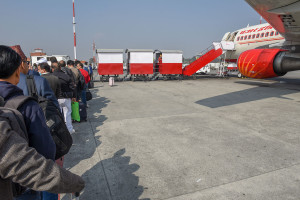Culture & Lifestyle
The multifaceted terrain of India's soft power
'Connecting Through Culture: An Overview of India's Soft Power Strengths' offers an outlook on the strengths of India's soft power in various domains.
Mukesh Kumar Srivastava
In contemporary times, the efficacy of foreign policy of any country is dependent more on 'soft power', i.e., in the words of Joseph Nye, the ability of attraction rather than coercion through culture, political ideals, and policies. As such, there has been a renewed emphasis on promoting India's soft power in exercising its foreign policy. With India emerging as an important player in world politics, 'Connecting Through Culture: An Overview of India's Soft Power Strengths' attempts to answer some questions that have been a subject of deliberations among the international community: From when and where did India derive its soft power? What has been and is presently India's global position regarding its soft power capabilities?
This book attempts to reconnect India's rich cultural and civilisational heritage with the contemporary world. As the name suggests, the book offers an overview of the strengths of India's soft power in various domains, ranging from traditional knowledge of Ayurveda and yoga to ancient Indian literature, arts and crafts, dance, music, cinema, textiles, and cuisines, among others. The book, consisting of 23 distinct chapters and four sections, is a collection of essays on different dimensions of India's soft power authored by experts in their respective domains.
The authors in each essay under Section 1, comprising Chapters 1-6, argue that soft power in India is more a 'way of life' rather than 'a tool' embraced by people across time and space. For instance, Chapter 1, which is devoted to 'Indian Soft Power in Material and Spirit', unveils the contributions of Indian texts, explorers and philosophers in the diffusion of Indian knowledge and wisdom. India's contribution is reflected in the mathematical number 'zero', which finds mention in the Bakshali manuscript; depiction of cycle of life in the Khajuraho temples, in the Chhatarpur district of Madhya Pradesh; Aryabhata's contribution to mathematics, such as an 'approximation of pi, the area of triangles, the notion of sine and cosine and algebraic rules for the summation of series of squares and cubes'; the contributions of Nalanda University and Takshashila University in the dissemination of Indian language and Buddhism; and the role played by Guptas and the Cholas in popularising the Nataraja dance, Ramayana, and traditional Indian medicine, particularly in Southeast Asia.
In Chapter 2, Amish Tripathi and Anjana Sharma trace the remnants of ancient Indian structures and texts in many countries. For instance, in Southeast Asia, Ramayana's reference is found in Malaysia as Hikayat Seri Rama; Thailand as Ramakien; Cambodia as Ramakerti; and reference to Mahabharata can be found in Indonesia as Bharatayuddha. In Chapter 3, Madhu Khanna reveals the profound contribution of the Sanskrit Language not just to literature but to the understanding of human history and the science of language.
Chapter 5 and 6 underline yoga and Ayurveda's multifaceted benefits since time immemorial as described in different ancient Indian texts. In the process, the authors highlight the role of great visionaries, including Swami Vivekananda, Guru Gorakhnath, the sage Gheranda, Swami Sivananda, Ramana Maharshi, Paramahansa Yogananda, and Swami Niranjanananda, among others, in popularising the vast body of knowledge on yoga in different periods.
What is interesting is the account of foreign explorers and scholars in disseminating Indian civilisation and culture. For instance, Peter Brook's adaptation of the Indian epic Mahabharata, the role of Indologist William Jones and other Sanskrit scholars such as Peter M Scharf and Sylvain Lévi in the diffusion of the Sanskrit language globally and exploring its close affinity with other languages such as Greek and Latin.
The aesthetic and rhythmic components of India's soft power, which have appealed to millions for ages, reflected in arts and crafts, textiles, dance, music, cinema and cuisines, are the major themes of Chapters 7-14. The chapters also highlight the distinctiveness of Indian classical and folk dance forms (from Kerala's Nataraja, Kathakali, and Mohiniattam, Andhra Pradesh's Kuchipudi, Tamil Nadu's Bharatanatyam, North and Central India's Kathak, and Assam's Bihuand Sattriya, Mizoram's Cheraw to Punjab's Jhoomar, Rajasthan's Ghoomar, and Gujarat's Dandiya). The chapters also explore music techniques, forms and practices (tala, raga, prabandha, and vadya mentioned in Natyasastra and Sangita Ratnakara; Hindustani and Carnatic music as well as folk music such as Bhavageete of Karnataka, Bihugeet of Assam, Bhangra of Punjab, Lavani in Maharashtra, and Baul in Bengal).
Similarly, the diverse cuisines, traditional attire, and cinema cutting across different states and regions of India also have come to find its global presence, including the Indian biryani and kebabs, lehengas, and saris. Many countries in Southeast Asia also share a lot of similarities with the cooking style of many traditional Indian cuisines. For instance, coconut milk is one of the main ingredients in South Indian dishes such as Aviyal, Appam, and many Thai curries. Indian traditional jewellery and ornaments, as well as fabrics, have cross-cultural charm. Indian cinema has produced some notable movies in many regional languages over the years, such as 'Pather Panchali', 'Do Bigha Zamin', and 'Jana Aranya'.
The celebration of rich Indian festivals and their democratic ethos form the basis of Chapters 15-18. Shyam Banerji underlines that the festivals, such as Kumbha Mela, Dusshera, Navaratri, Durga Puja, Diwali, Chhat Puja, Baisakhi, Nowruz, Eid, and Christmas, are testimony to the confluence of different faiths and religious expressions across different regions of India.
Similarly, in the chapter on 'Democracy: The DNA of India', Vinay Sahasrabuddhe elaborates on the age-old democratic traditions prevalent in ancient India. Terms such as 'sabha' and 'samiti', referred to in both the Rig Veda and the Atharva Veda, exhibit the essence of deliberative democracy. Besides Kautilya's 'Arthashashtra', references to the term republic can be found in the 'Aitareya Brahmana', 'Ashtadhyayi', and 'Manusmriti'.
Chapters 19-23 underscore the role played by great Indian philosophers and explorers, such as Vardhman Mahaveer, Kabeer, Tulsidas, Guru Nanak, Swami Vivekananda, Rabindranath Tagore, Sri Aurobindo, Lokmanya Tilak and Mahatma Gandhi, in transporting and presenting such rich heritage in various world platforms.
Overall, the book offers valuable insights into the multifaceted terrain of India's soft power-a vivid description of the past riches of Indian culture and its continued contemporary relevance, thereby adding to the larger body of scholarship on 'soft power'. What is novel about the book is that the authors have traversed the wide gamut of ancient Indian texts and scriptures to provide an overview of the strengths and India's position on the global stage in terms of soft power. In this direction, the global recognition of yoga as an alternate healthcare system, particularly during the Covid-19 pandemic, is a testimony to the timeless impact of India's soft power.
The way the authors have painted a candid picture of India's soft power strengths will interest anyone in understanding not only contemporary Indian foreign policy but the rich cultural and philosophical foundations of India since antiquity. Students, scholars and faculty members interested or involved in soft power discourse and Indian foreign policy will find the book very useful. The book can also be a useful roadmap for policy-makers and practitioners to frame deliverable policies for the better promotion of Indian soft power on the global stage.
———————————————————————————————————————
Connecting Through Culture: An Overview of India's Soft Power
Authors: Vinay Sahasrabuddhe and Sachchidanand Joshi
Publisher: Wisdom Tree
Price: Rs 1592 (approx)




 8.12°C Kathmandu
8.12°C Kathmandu















